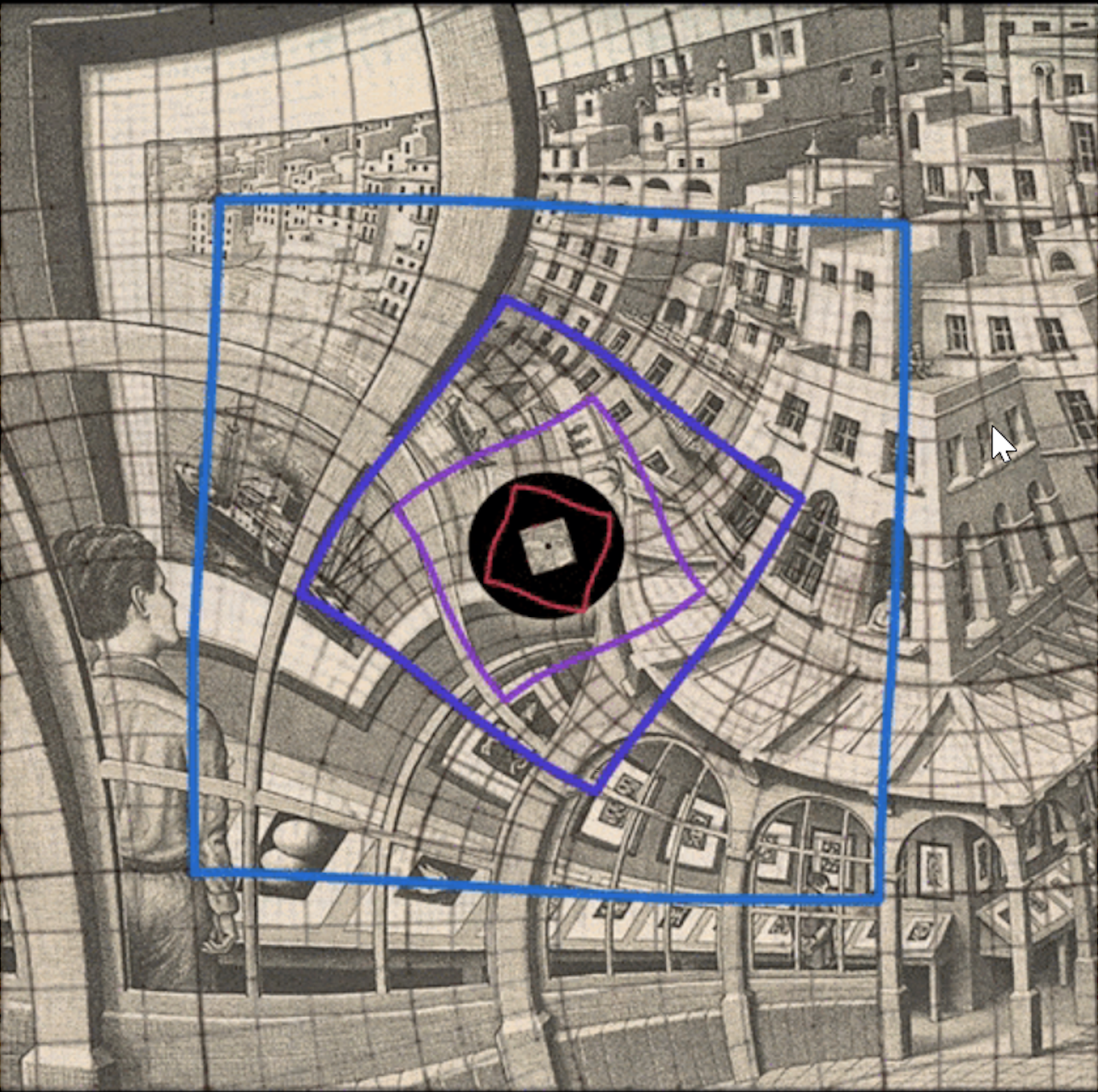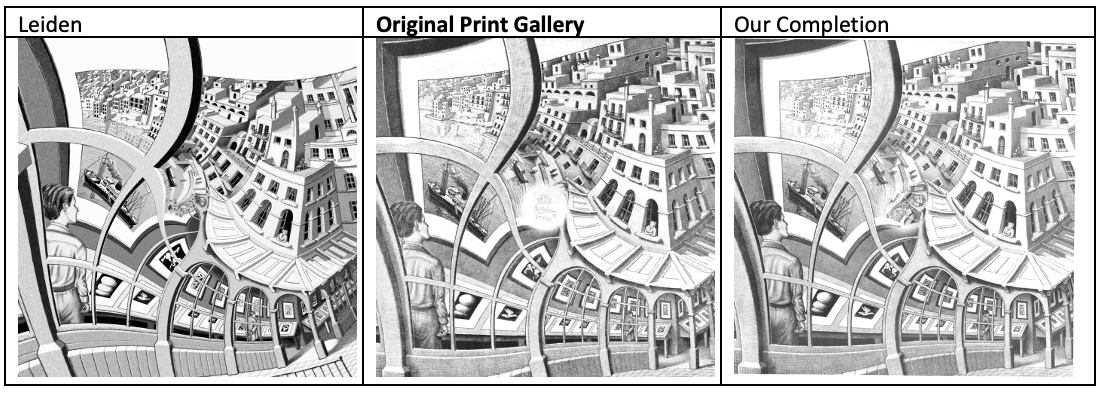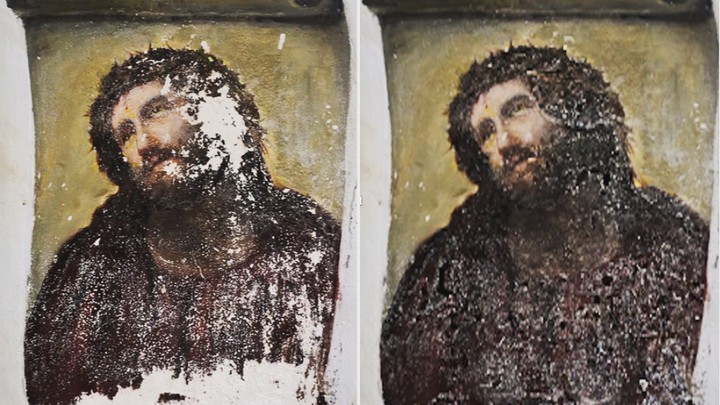Fine Art Restoration
Print Gallery by M.C. Escher

M.C. Escher’s “Print Gallery” is a lithograph from 1956 that showcases the artist’s deep interest in paradoxes, infinity, and the impossible. The work features a young man standing in an art gallery, observing a print on the wall. This print within a print recursively includes the gallery itself, creating a visually perplexing loop where the inside and outside worlds converge. A unique aspect of this artwork is the deliberate blank space or ‘hole’ at the center of the composition. Escher left this area unfilled, which has intrigued mathematicians and art enthusiasts alike, as it breaks the continuity of the recursive loop and introduces an element of the impossible, a characteristic often found in Escher’s work.
Several attempts to explain and fill the center void have surfaced through the years. In 1979, Douglas Hofstadter wrote in his book Godel, Escher, Bach “….for in fact Escher could not have completed that portion of the picture without being inconsistent with the rules by which he was drawing the picture. That center of the whorl is-and must be-incomplete.”(p.717) In 2002, a team of mathematicians from Leiden University, shown that there is a mathematical structure of periodic self-repetition within the lithograpy. Then used the periodic repetitions to extend the recursion into the blank space.
The Use of AI in Completing Print Gallery
Our approach extends from previous efforts and use AI to complete the center in a way that respects the mathematics of the self-repeating pattern present in the painting. The main advantage of AI lies in that we are able to complete the center without having to modify the rest of the painting.
Below we can see the spyraling structure behind Print Gallery. The void in the center contains a repetition of Print Gallery itself, and extra content needed to infill the black circle. This content that expands the field of view was generated with AI.

The cleverest and most impressive print of this period, without a doubt a highlight in the whole of Escher’s work, is Print Gallery (1956). (……) Escher’s own opinion was that in Print Gallery he had reached the furthest bounds of his thinking and his powers of representation.
– The Magic Mirror of M.C. Escher, by Bruno Ernst
Results
Below we show the results of our completion of the center with AI (right) agains the original lithography and previous results (left).

Related Publications
The Artificial Intelligence model is described in our CVPR 2022 publication. The candidate selection model is described in our ICML 2022 publication.
Ecce Homo by Elias Garcia Martinez.
